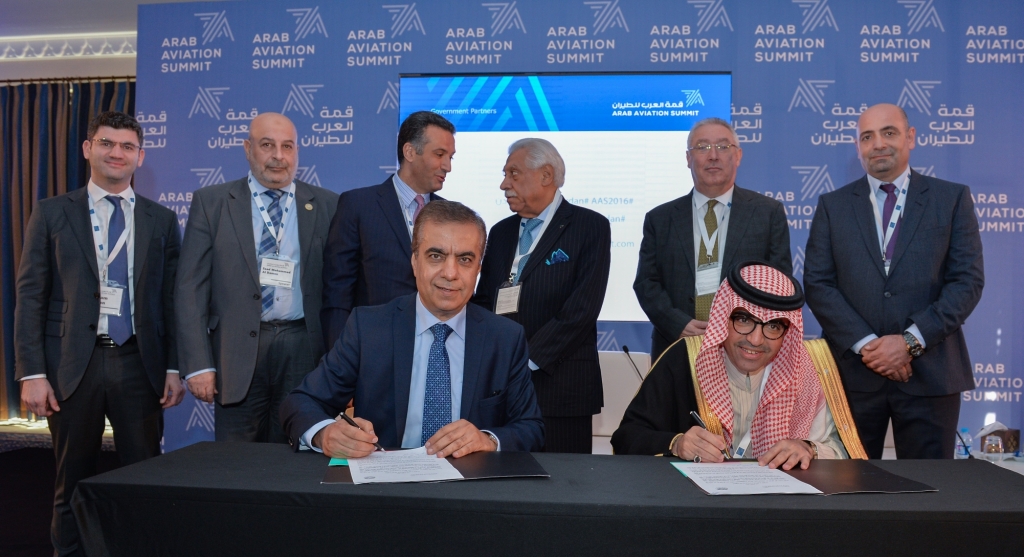
Arab Aviation Summit concludes
Arab Aviation Summit, the most prominent aviation event in Middle East and North Africa (MENA), concluded yesterday as government officials, and senior executives from the civil aviation and tourism industry gathered by the Dead Sea in Jordan to reflect on the past developments and future trends shaping the future of the avia-tourism industry in the region.
Taking place under the patronage of Her Excellency Lina Annab, Minister of Tourism and Antiquities, Jordan, the summit has brought together top executives from the aviation and tourism sector by the Dead Sea, Jordan to explore this year’s theme ‘Linking Cultures, Driving Economies’.
In honour of the occasion, the Arab Tourism Organization of the Arab League and the Arab Aviation Summit signed a Memorandum of Understanding at the event, which marks a firm commitment to future cooperation.
The summit opened with a welcome address by the Arab Aviation Summit Chairperson Adel Al Ali, in which he highlighted the important relationship between aviation and tourism while encouraging a holistic, collaborative approach to the region’s travel industry to achieve further growth and momentum.
H.E. Lina Annab concurred that aviation and tourism cannot be seen in isolation. Commenting on growth in the travel and tourism sector, which is outpacing growth in other sectors in national economies, the Minister of Tourism and Antiquities highlighted airport infrastructure, visa processes, and taxes and other levies as issues that need to be prioritized by governments and approached collectively.
His Excellency Dr. Bandar Fahad Al Fehaid, President, Arab Tourism Organization of the Arab League, commented that there is no tourism without aviation, and no aviation without tourism. Speaking of the Organization’s vision to support the growth of these vital industries in the coming years, H.E. Dr. Bandar Fahad Al Fehaid informed attendees that 12% of the total working opportunities in the Arab world come from the tourism industry and there is significant potential to increase this further.
CNBC Arabia led an interview panel discussion on the topic ‘Why Arab travel and tourism is a vital economic and cultural driver?’, featuring Mr. Abdel Wahab Teffaha, Secretary General of the Arab Air Carriers Organization (AACO) and moderated by Osayed Khreisat, a financial analyst and reporter at CNBC Arabia TV.
On the panel ‘Putting Arab Aviation and Tourism policies under review – expanding economic opportunities’, Mr. Haitham Mattar, CEO of Ras Al Khaimah Tourism and Development Authority (RAK TDA), talked about the importance of data and taking a microscopic approach to understanding what travellers want in order to respond effectively. Speaking alongside Mr. Mattar were representatives from Airbus and the International Air Transport Association (IATA). The group discussed the expectation for the annual number of travellers to double over the next few years and how the industry can grow in an environmentally sustainable way.
The day-long summit, moderated by Richard Dean, co-host of The Business Breakfast show on Dubai Eye 103.8 FM radio, concluded with a session featuring two prominent social media influencers from the region – Faisal Sheraiff and Yousef AlSudais. Exploring the impact of new technology and digital media on consumer engagement and destination tourism, the pair shared unique insight on what the ‘future traveller’ wants to experience.
Another key highlight of the Arab Aviation Summit was the inauguration of the ‘Airbus Little Engineer’ Workshop – an award-winning initiative dedicated to nurturing young minds and enhancing public understanding of science, technology, engineering and mathematics through interactive and tailored programs. Fifty students from local schools in Jordan participated in the workshop, demonstrating the summit’s commitment to enhancing practice-based learning for the future leaders in aviation and tourism.
Hailed as the ‘voice of the industry’, the Arab Aviation Summit is an industry initiative organized annually. Key findings and outcomes from the summit are compiled and developed into a white paper report, which is later presented to regulators and decision makers from both public and private sectors, and followed up by a course of action.



























